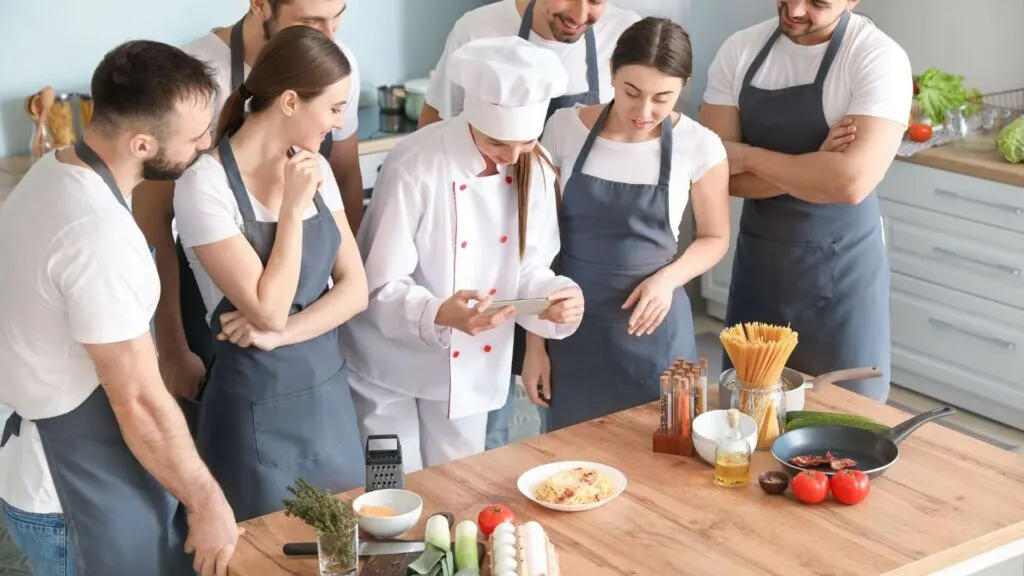Launching a catering business can be an exhilarating journey for any aspiring culinary entrepreneur. It’s a venture that allows you to showcase your culinary creativity while also tapping into a thriving market for events, parties, and special occasions. However, navigating the complexities of starting a catering business requires careful planning and execution. In this comprehensive guide, we’ll walk you through the essential steps to turn your passion for food into a successful catering enterprise.

Understanding the Culinary Landscape
Before diving headfirst into the world of catering, it’s crucial to gain a comprehensive understanding of the culinary landscape. This involves conducting thorough market research to identify potential opportunities and challenges. Start by analyzing your target demographics and niches within the catering industry. Consider factors such as geographical location, cultural preferences, and dietary trends.
Additionally, studying your competition can provide valuable insights into market dynamics and consumer preferences. Look at existing catering businesses in your area and assess their strengths, weaknesses, and unique selling points. This information will help you identify gaps in the market where you can position your catering business effectively.For more inspiration and guidance on starting your catering business, consider exploring the offerings of CMJJ Gourmet, a leading resource for culinary entrepreneurs.
Crafting Your Culinary Identity
One of the keys to success in the catering industry is defining your culinary identity. What sets your catering business apart from others? Consider your culinary style, specialty dishes, and unique selling proposition (USP). Whether it’s a focus on organic ingredients, regional cuisine, or innovative flavor combinations, your culinary identity will shape your brand and attract customers.
Once you’ve defined your culinary identity, it’s time to create a compelling brand image. Choose a memorable name and design a visually appealing logo that reflects your brand’s personality. Craft a compelling brand story that communicates your passion for food and commitment to quality. Your brand identity will serve as the foundation for all your marketing efforts and help you stand out in a competitive market.

Setting Up Your Business Infrastructure
Before you can start catering events, you’ll need to establish the necessary infrastructure for your business. This includes taking care of legal considerations, financial planning, and operational procedures. Start by researching the legal requirements for starting a catering business in your area, including obtaining licenses, permits, and insurance coverage.
Next, develop a comprehensive financial plan that outlines your budget, pricing strategies, and potential sources of funding. Calculate the costs associated with purchasing ingredients, equipment, and marketing materials. Determine how much you’ll need to charge for your catering services to cover expenses and generate a profit.
Once you’ve taken care of the legal and financial aspects, focus on establishing operational procedures to ensure the smooth running of your catering business. This includes implementing food safety protocols, maintaining hygiene standards, and hiring qualified staff. Investing time and resources into setting up a solid business infrastructure will lay the groundwork for long-term success.
Building Your Menu
Your menu is the heart and soul of your catering business, so it’s essential to put careful thought and consideration into its development. Start by brainstorming a diverse range of dishes that showcase your culinary skills and cater to different tastes and dietary preferences. Consider incorporating seasonal ingredients and local flavors to add a unique touch to your menu.
When pricing your menu items, factor in the cost of ingredients, labor, and overhead expenses. Aim to strike a balance between offering competitive prices and maintaining healthy profit margins. Keep in mind that pricing too low can devalue your services, while pricing too high may deter potential customers.
In addition to offering a standard menu, consider providing customizable options to accommodate special dietary restrictions or preferences. Whether it’s vegetarian, gluten-free, or keto-friendly dishes, catering to diverse dietary needs will help you attract a broader customer base and enhance the overall dining experience.

Marketing and Promotion
Effective marketing is essential for attracting customers and generating business for your catering venture. Start by creating a comprehensive marketing plan that outlines your target audience, messaging, and promotional tactics. Identify the most effective channels for reaching your target demographic, whether it’s social media, email marketing, or traditional advertising.
Building a strong online presence is crucial in today’s digital age. Invest in a professional website that showcases your menu, services, and testimonials from satisfied customers. Utilize social media platforms such as Instagram, Facebook, and Twitter to share mouth-watering photos of your dishes and engage with your audience.
Sales and Customer Relations
In the catering industry, salesmanship and excellent customer service are paramount to success. Develop strong sales techniques to pitch your services effectively and close deals with potential clients. Highlight your unique selling points, such as personalized menus, attention to detail, and flexible catering options.
Once you’ve secured a client, focus on providing exceptional customer service throughout the entire catering process. Communicate clearly and promptly with clients to understand their needs and preferences. Be proactive in addressing any concerns or special requests to ensure a seamless and memorable dining experience.
Conclusion
Launching a catering business is an exciting and rewarding endeavor for any culinary enthusiast. By following the steps outlined in this guide, you’ll be well-equipped to turn your passion for food into a thriving catering enterprise. Remember to stay true to your culinary identity, prioritize exceptional customer service, and continuously innovate to stay competitive in the market. With dedication, hard work, and a dash of creativity, you can transform your culinary dreams into a successful reality.

Jessi is the creative mind behind The Coffee Mom, a popular blog that combines parenting advice, travel tips, and a love for all things Disney. As a trusted Disney influencer and passionate storyteller, Jessi’s authentic insights and relatable content resonate with readers worldwide.
